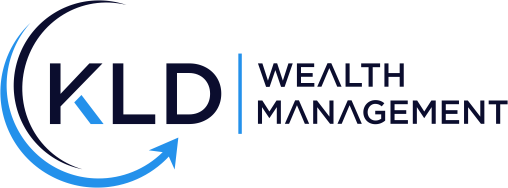Get in touch
Call or Text:
937-404-5180
Email:
dwiedmeyer@kldwealth.com
Looking for ways to put more into your ROTH? Check out how below:

- For 2024, you can contribute up to $23,000 to your 401(k) ($30,500 if you're over 50). These contributions are pre-tax, reducing your taxable income for the year.
- Many employers offer the option to make after-tax contributions to your 401(k) beyond the standard limits. The total 401(k) contribution limit (including employer match, employee contributions, and after-tax contributions) for 2024 is $69,000 ($76,500 if you're over 50).
- Once you’ve made after-tax contributions, you can convert these funds to a Roth IRA, where they can grow tax-free. This is known as a “Mega Backdoor Roth Conversion.”
- The advantage here is that while your after-tax contributions have already been taxed, any growth on these contributions in the Roth IRA will be tax-free.
- Significantly Increase Roth Savings: This strategy allows you to contribute much more to a Roth IRA than the annual limit of $7,000 ($8,000 if you're over 50).
- Tax-Free Growth: All earnings on your converted funds grow tax-free, and qualified withdrawals in retirement are also tax-free.
- Reduce Future Tax Liability: By moving funds to a Roth IRA, you reduce the amount of required minimum distributions (RMDs) you’ll have to take from your traditional retirement accounts, potentially lowering your future tax liability.
- High-Income Earners: If you’re a high-income earner who has maxed out your traditional and Roth IRA contributions, this strategy can help you save even more for retirement.
- Employer Plan Eligibility: Check if your employer’s 401(k) plan allows for after-tax contributions and in-plan Roth conversions or distributions to a Roth IRA.
- Long-Term Investment Horizon: The longer your funds have to grow tax-free, the more advantageous this strategy becomes.
- Check Your 401(k) Plan Rules: Confirm with your HR or benefits department if your plan allows for after-tax contributions and in-service distributions or in-plan Roth conversions.
- Contribute After-Tax Funds: Begin making after-tax contributions to your 401(k) once you’ve maxed out your pre-tax or Roth 401(k) contributions.
- Initiate the Conversion: Work with your plan administrator to convert after-tax contributions to your Roth IRA or conduct an in-plan Roth conversion.



Phone
937-404-5180
706 Deerfield Rd.
Lebanon, OH 45036
Get financial wellness tips, directly to your inbox.
Contact Us
We will get back to you as soon as possible.
Please try again later.
All Rights Reserved | KLD Wealth | Privacy Policy | Form ADV
Advisory services offered through KLD Wealth Management, LLC, an investment adviser registered with the state(s) of Ohio. Advisory services are only offered to clients or prospective clients where KLD Wealth Management, LLC and its representatives are properly registered or exempt from registration.
The information on this site is not intended as tax, accounting or legal advice, nor is it an offer or solicitation to buy or sell, or as an endorsement of any company, security, fund, or other offering. Information provided should not be solely relied upon for decision making. Please consult your legal, tax, or accounting professional regarding your specific situation. Investments involve risk and have the potential for complete loss. It should not be assumed that any recommendations made will necessarily be profitable.
The information on this site is provided “AS IS” and without warranties either express or implied and the information may not be free from error. Your use of the information provided is at your sole risk.
